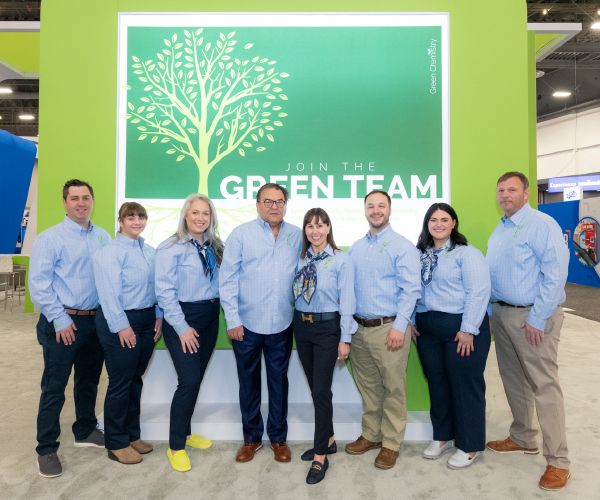
Square Peg Round Hole
April 1, 2013
8 minute ReadWhile today’s economy may mean there are a lot of people looking for work, it’s critical that an organization focus on making the right hires. Many employers tend to focus on the skills and experience a candidate brings to the table. Instead, the focus should be on what “fit” the candidate has. Skills and experience are important, but the key to the hiring puzzle is oftentimes fit.
Getting the equation right
Nancy Uden, vice president of franchise services and human resources for salon franchisor Great Clips, said that “fit” is the missing piece for many employers. “When employers hire people, they look at three things. One, can the person do it; two, will they do it; and three, will they fit with this organization. The first two get the focus,” Uden said. “When employers fire people, it’s the opposite order. It’s not because they couldn’t do one and two; it’s because they don’t fit. Because of that phenomena, fit is absolutely critical.”
Kimberly Rath, president and managing director of Talent Plus, a leader in talent-based assessments for employee selection and development through scientific solutions, agreed.
“Talent Plus has a formula: ‘Talent + Fit x Investment = Growth®.’ While fit is the smallest word, it’s the most dynamic,” Rath said. “Think of it this way: If you are a high-level executive, with years of experience on your resume, and you are selected into a company whose culture is significantly different than your own or what your vision is for the company, the likelihood that you will succeed and bring along your associates to grow the company is not great.”
Rath shared this story: “This just happened with a major clothing retailer. They hired an established CEO from a major technology company — he had an amazing resume of accomplishments and though he made sweeping changes that worked very well for him at the tech company, they were not received well by the clientele or the associates of the clothing retailer. That is very likely a multi-million dollar mistake. Not only did they lose money in time and salary to initially search and ultimately hire him, but they sustained devastating losses to their stock price, which plummeted. Add to that the well-reported cost of losing good employees who left under his leadership because they didn’t buy into the new direction of the company. Instead of a recipe for success, you have created a disaster. That’s why fit is so crucial!”
Talent Plus has been studying fit and success for a long time. One of the company’s founders, Dr. William E. Hall, noticed a trend. “He knew that when you study the best, patterns emerge so that you can replicate the behaviors of successful people and reliably predict, with high accuracy, who will be your best performers,” Rath said. “Our research is scientifically validated over time through results with our clients. Every time we build out an interview, we start with three main goals: become experts on the position we’re studying; ensure we have the right sample; and work diligently to identify the items that differentiate between top and contrast performers.”
This accuracy has led to a lot of success for Talent Plus: they’re an internationally recognized management consulting firm with more than 200 clients in 20 countries, delivering interviews and assessments in more than 20 languages.
The importance of the interview
Where are employers getting it wrong? Uden said it is the interview process. Most employers are focused on the candidate meeting the duties listed in the job description when they should be focused on asking questions that illustrate fit.
Rath agreed. “If you focus solely on resume strength or filling the spot as quickly as you can, you are not valuing the process,” she said. “Identifying and attracting talented people who fit your culture … will ultimately pay dividends for you well into the future.”
Situational questions help employers get at how people think. “A good situational question gets you an answer about their involvement on teams, what do they value in an organization,” said Uden. “Do their values match our values? Fit is about the organization’s values.”
Great Clips created an interview guide for its salon managers to use when hiring stylists. “Our questionnaire is designed with questions and answers to look for,” said Uden. Great Clips also uses assessments that gauge a candidate’s personality fit and their customer service aptitude.
At Autobell Car Wash, Chief Operating Officer Carl Howard said the organization looks for the cream of the crop in its 65 full-service locations in North Carolina, South Carolina, Georgia and Virginia. “We want the best of the best — not just among car wash people,” Howard said. “Our employees would be the best of every other service-oriented business. They have got to have the servant attitude.”
When hiring store managers, Autobell only hires from within. “We look for attributes of a manager among the crews that we have,” Howard said. “We’re able to get a good, long look at them before we promote them into a management position.” Once someone has been identified to move into a management position, they attend several modules of in-class training, but the real test is in the field. “Once the managers have completed their classroom time, they go to another store and work under the supervision of a district manager,” Howard said. “We want to make sure that we’re promoting the right fit for our company. That extra set of eyes will give us an opinion on whether a person is the right fit.”
Rath agreed that there should be an emphasis on hiring the right leaders for the company. “There should always be an emphasis on getting the right leaders in place,” she said. “Their behaviors become the organizational values. However, companies often take shortcuts when hiring the frontline-level employees. What a mistake! That’s where you have the customer experience.”
Hiring the right frontline employees also leads to potential success in the future. “There is incredible value in keeping your leaders homegrown, and that often begins on the frontline,” Rath said. “Talent can and should be identified at every level.”
Uden said the Great Clips salon owners who get it are the people who know how important fit is and spend a significant amount of time on it. “They’ll do multiple interviews and have candidates meet with multiple team members,” Uden said. “There is a direct correlation between salons that run well with employees who have the technical skills and the fit on the team.”
Employees create the customer experience
For Great Clips, Uden said you can feel the “fit” as a customer when you walk into the salon. “I walk into some of our salons and it feels just like walking into the bar ‘Cheers’ — people are laughing, customers are having a good time,” Uden said. “You just feel it.”
What happens when that feeling is less than stellar?
“How many times have you walked into a restaurant and you’re trying to engage with the waiter, but you can tell they don’t like their job?” Rath asked. “The customer experience is clouded. No matter how good the food and environment are, the waiter didn’t make that experience delighting. We’ve found in our research that frontline individuals who fit the organization and the role are two to three times more productive than the average or low performers. The low-performers were the result of an organization taking a shortcut, thinking they don’t need as much talent there. It’s vital that they have the right individual taking care of their clients.”
Making a choice
When you don’t have the right fit, employers have a decision to make.
“Fit is the hardest thing to fix,” said Uden. When stylists come out of cosmetology school, they have the foundation for the technical skills required to do the job. If those technical skills aren’t perfect, salon owners and managers can work with the stylists to improve. “Oftentimes fit is the ‘something’ you can’t fix,” Uden said. “Making someone fit is like trying to fit a square peg into a round hole.”
Howard of Autobell agrees. “When you try to put a square peg in a round role, it inevitably won’t work,” Carl said. “It won’t work for the company, the customers or the employee.” Autobell’s philosophy? “We try to hire slowly to have the best fit we can possibly find, and fire quickly if we have to,” said Howard.
Rath recommends organizations consider recasting. “Is this person a better fit in another role?” Rath said. “Maybe the person isn’t good with customers but would be good in a support service role.” Rath shared a story about a health care client Talent Plus had recently worked with. Talent Plus helped the company to assess a particular job candidate for a nursing position and highly recommended her. The nurse was placed in an emergency room nursing role, and it was quickly apparent to her and the organization that she wasn’t a good fit. The organization went back to Talent Plus to ask what had gone wrong. When Talent Plus reviewed the nurse’s assessments, it showed she had a low score for resourcefulness, a trait highly necessary in ER situations. Talent Plus recommended the organization recast the nurse into another area. The organization did just that, moving the nurse to their acute care unit. In only a year’s time, she was named employee of the year. While her technical skills matched the emergency room role, her “fit” for that role was off — she was the square peg in the round hole. As soon as she found her square hole, it “clicked.”
When you’re looking to fill positions, be conscious of not only the person’s skills and experience, but also how they’d fit with your team and your customers. Hiring the right employees from the beginning can lead to success — not only in your business’ immediate future, but also in the long-term, as those high-performing frontline employees today become your organization’s top-level leaders tomorrow.
5 tips for finding the right fit
Ask situational questions during the interview that show how candidates react to different scenarios. Ask questions about a time they worked with a difficult customer or coworker — how did they handle the conflict? Also ask them about their ideal coworker. Does their answer describe your best employees?
Get your candidates in front of other trusted employees. Like Great Clips and Autobell, have frontline candidates interview with other team members, and have manager-level candidates meet with leaders from other locations, if possible.
Replicate your best employees. Take a hint from Talent Plus: You know who your best people are. What makes them the best? Find candidates with those same qualities.
Consider using assessments in the hiring process. Create your own specific and customized questionnaire, like Great Clips did for its stylist hiring, or reach out to a firm who specializes in assessing talent and fit, like Talent Plus.
When you have an employee who isn’t the right fit: Make a decision. Are they lacking skills that your organization can train? Are they possibly just in the wrong role? Or are they a square peg and your organization only has round holes?








